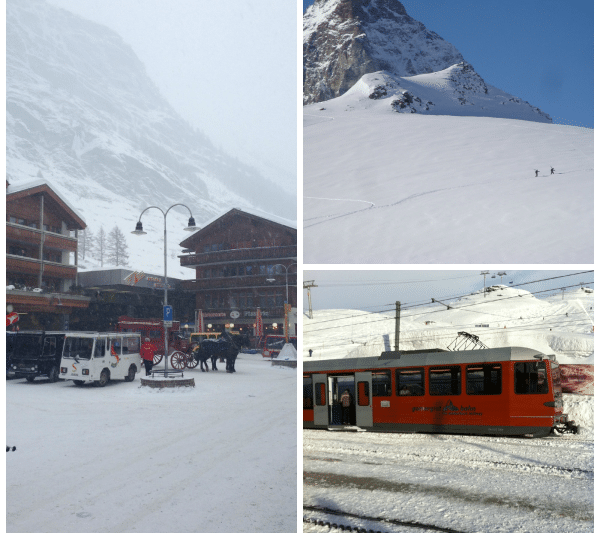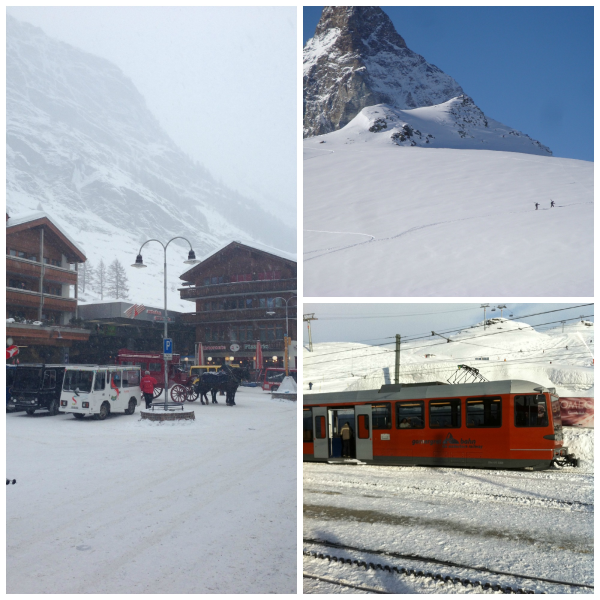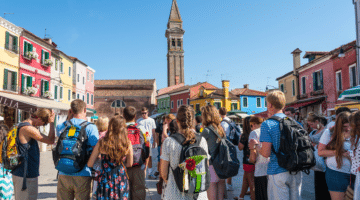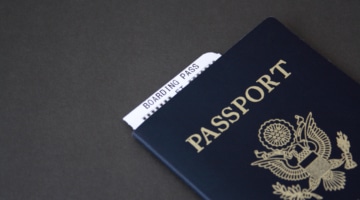Spotlight on Switzerland: Train Ride from Geneva to Zermatt

A friend of mine and I had taken a few days to ski in Zermatt, Switzerland. It’s something we try to do each year. More often than not, we have driven from Geneva or Zurich to the last point of entry before you have to take the train onward into the traffic-free town of Zermatt. This year, however, we took the train the entire way. Swiss efficiency at its most remarkable.
From the arrival hall at Geneva Airport, we walked about 100 yards, changed some money into Swiss Francs, grabbed a sandwich and a bottle of water, and waited about three minutes for the train that would take us to Geneva Central. That journey took five minutes. At Geneva Central, it was only a 10 minute wait before we climbed onto a superfast train that would connect in a small town called Visp. From here we would continue on a cog railway to Zermatt.
Total journey time: Three hours. Cost of a ticket: Just around 90 Swiss Francs.
It was a beautiful sunny day. At first the train ambled, but then changed into high-speed while vineyards and castles flickered by. Lake Geneva seemed to stretch for miles and miles to the French side of the lake. We passed Lausanne and Montreux and a whole host of delightful lake towns where the rich and famous spend their days avoiding taxation. The mountains were looming in the background and the snow levels were high.
As the train entered Visp, we had to make a quick change and board the Glacier Express train. Visp is practically the last station in the valley before the mountains of Saas-Fee and the Matterhorn start to encroach on the daylight. It’s a ski train in the winter and a hikers train in the summer. It runs several times a day from St. Moritz to Zermatt. The entire journey would take seven and a half hours as it crosses over 291 bridges and goes through 91 tunnels. Our short journey from Visp was just an hour. The train’s bright red colors stood out in the snowy landscape. It’s a cog railway and it was thrilling to gradually climb and watch the snow banks get taller and taller until we were looking at thre meters of snow on either side. As the train snaked its way up the hilly landscape and along the river into Zermatt, the mountains on either side towered over us and the sunlight disappeared as the valley became a dead end.
The train station in Zermatt at this time of the year is a skier’s paradise. A busy hive of activity as electric taxis and horse drawn carriages transport tourists to their hotels. The most thrilling ride of all would be the next day on the Gornergrat, another cog railway, which serves the Zermatt side of this mountain range. Here you can ski above tree level or simply sit in the café and watch the skiers take off at 12,000 feet. Tomorrow we would traverse across the mountains to Italy and up to the height of the Klein Matterhorn at 14,000 feet (one of the highest skiable points in the Alps). All by train and a giant gondola with swish Swiss efficiency.
Until we reach Italy and efficiency might not be quite as stellar as the Swiss side, but the food would more than make up for a little casualness!
Peter Jones is the founder and President of ACIS. Knowing the important difference between a trip that’s mediocre and one that’s extraordinary, he built ACIS from a deep belief and understanding that teachers and students deserve the best—from itinerary development to hotels to perhaps most importantly, the people hired to guide teachers and students throughout the journey.










